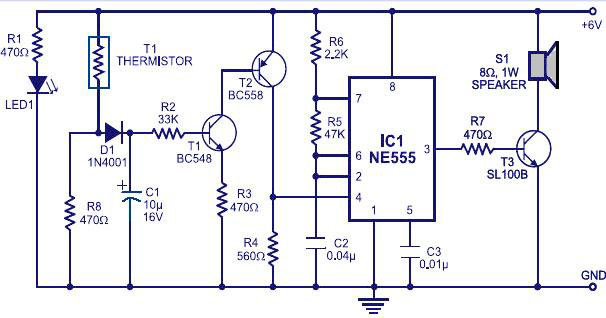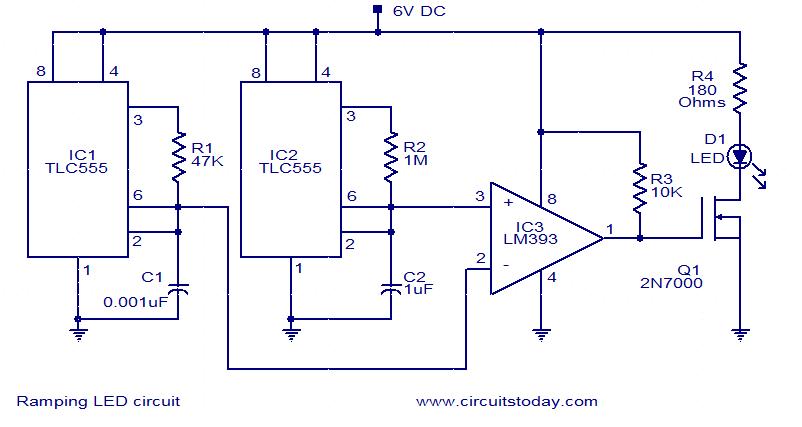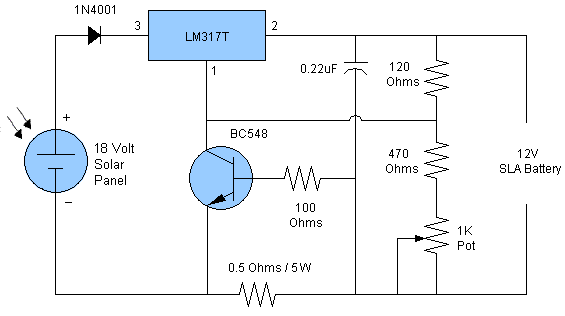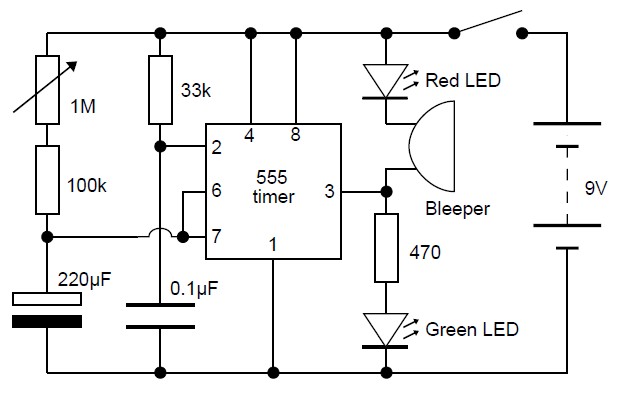
Multi Loop Parallel Alarm Circuit
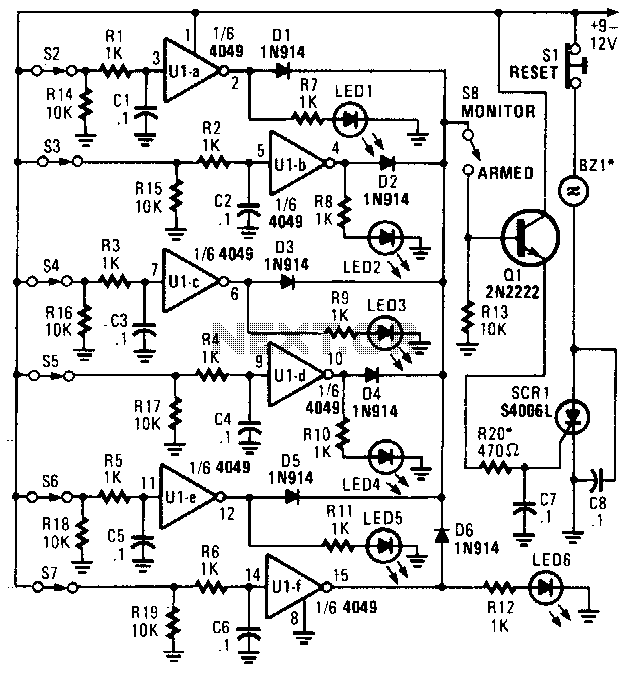
This alarm features status LEDs connected to each inverter output, which indicate the status of the corresponding sensor. S8 is utilized to monitor the switches through the LEDs or to activate an alarm using Q1 and SCR1. Additionally, BZ1 should be a suitable non-interrupting alarm.
The described alarm circuit integrates several key components to facilitate effective monitoring and alerting based on sensor status. The status LEDs serve as visual indicators, providing real-time feedback on the operational state of each sensor connected to the inverters. Each inverter output is linked to a specific sensor, allowing for immediate identification of any issues or changes in sensor status.
The switch monitoring function is facilitated by S8, which plays a crucial role in the circuit by enabling the LEDs to display the operational status of the switches. When a switch is activated or deactivated, S8 detects this change and the corresponding LED illuminates, offering a clear visual representation of the sensor's condition.
In terms of alarm activation, Q1 and SCR1 work in tandem to trigger an alarm signal when necessary. Q1, typically a transistor, acts as a switch that can be controlled by the output from the sensors. When the sensors detect a fault or an abnormal condition, Q1 is activated, allowing current to flow to SCR1. SCR1, a silicon-controlled rectifier, is designed to handle high power and can latch on, providing a sustained output until the circuit is reset or turned off.
The inclusion of BZ1 as a non-interrupting alarm ensures that the alert is consistent and does not disrupt the monitoring process. This type of alarm is critical in applications where continuous operation is necessary, as it provides an audible alert without interrupting the functionality of the sensors or the monitoring system.
Overall, this alarm circuit is designed for reliability and efficiency, integrating visual and audible alerts to provide comprehensive monitoring of sensor status. The combination of LEDs, Q1, SCR1, and BZ1 creates a robust system that can effectively indicate and respond to changes in the monitored environment. This alarm has status LEDs connected across each inverter output to indicate the status of its associated sensor. S8 is used to monitor the switches via the LEDs, or to trigger an alarm via Q1 and SCR1. BZ1 should be a suitable alarm of the noninterrupting type.
The described alarm circuit integrates several key components to facilitate effective monitoring and alerting based on sensor status. The status LEDs serve as visual indicators, providing real-time feedback on the operational state of each sensor connected to the inverters. Each inverter output is linked to a specific sensor, allowing for immediate identification of any issues or changes in sensor status.
The switch monitoring function is facilitated by S8, which plays a crucial role in the circuit by enabling the LEDs to display the operational status of the switches. When a switch is activated or deactivated, S8 detects this change and the corresponding LED illuminates, offering a clear visual representation of the sensor's condition.
In terms of alarm activation, Q1 and SCR1 work in tandem to trigger an alarm signal when necessary. Q1, typically a transistor, acts as a switch that can be controlled by the output from the sensors. When the sensors detect a fault or an abnormal condition, Q1 is activated, allowing current to flow to SCR1. SCR1, a silicon-controlled rectifier, is designed to handle high power and can latch on, providing a sustained output until the circuit is reset or turned off.
The inclusion of BZ1 as a non-interrupting alarm ensures that the alert is consistent and does not disrupt the monitoring process. This type of alarm is critical in applications where continuous operation is necessary, as it provides an audible alert without interrupting the functionality of the sensors or the monitoring system.
Overall, this alarm circuit is designed for reliability and efficiency, integrating visual and audible alerts to provide comprehensive monitoring of sensor status. The combination of LEDs, Q1, SCR1, and BZ1 creates a robust system that can effectively indicate and respond to changes in the monitored environment. This alarm has status LEDs connected across each inverter output to indicate the status of its associated sensor. S8 is used to monitor the switches via the LEDs, or to trigger an alarm via Q1 and SCR1. BZ1 should be a suitable alarm of the noninterrupting type.
